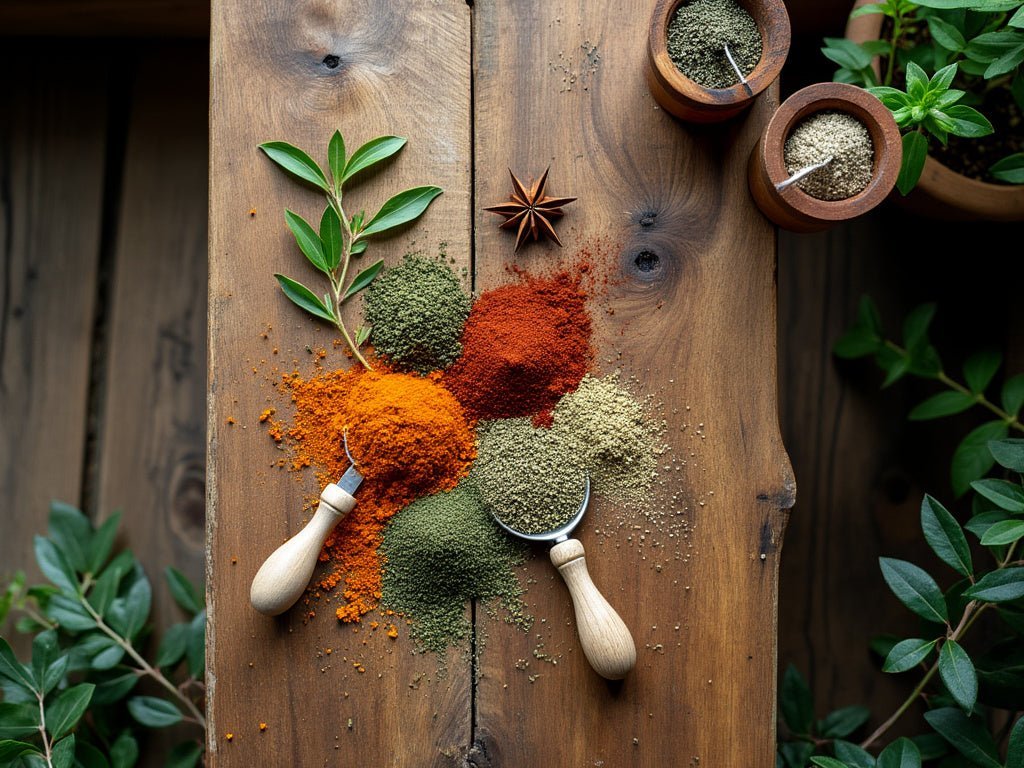
Organic Herbs & Spices: 13 Must-Have Flavors to Transform Your Home Cooking
|
|
Time to read 4 min
|
|
Time to read 4 min
Table of contents
Imagine transforming a simple chicken breast into a mouthwatering masterpiece with just a pinch of the right spice. That's the magic of having a well-stocked spice rack. At Nourishing Tapestry, we believe in the power of organic, pesticide-free spices to elevate your cooking game.
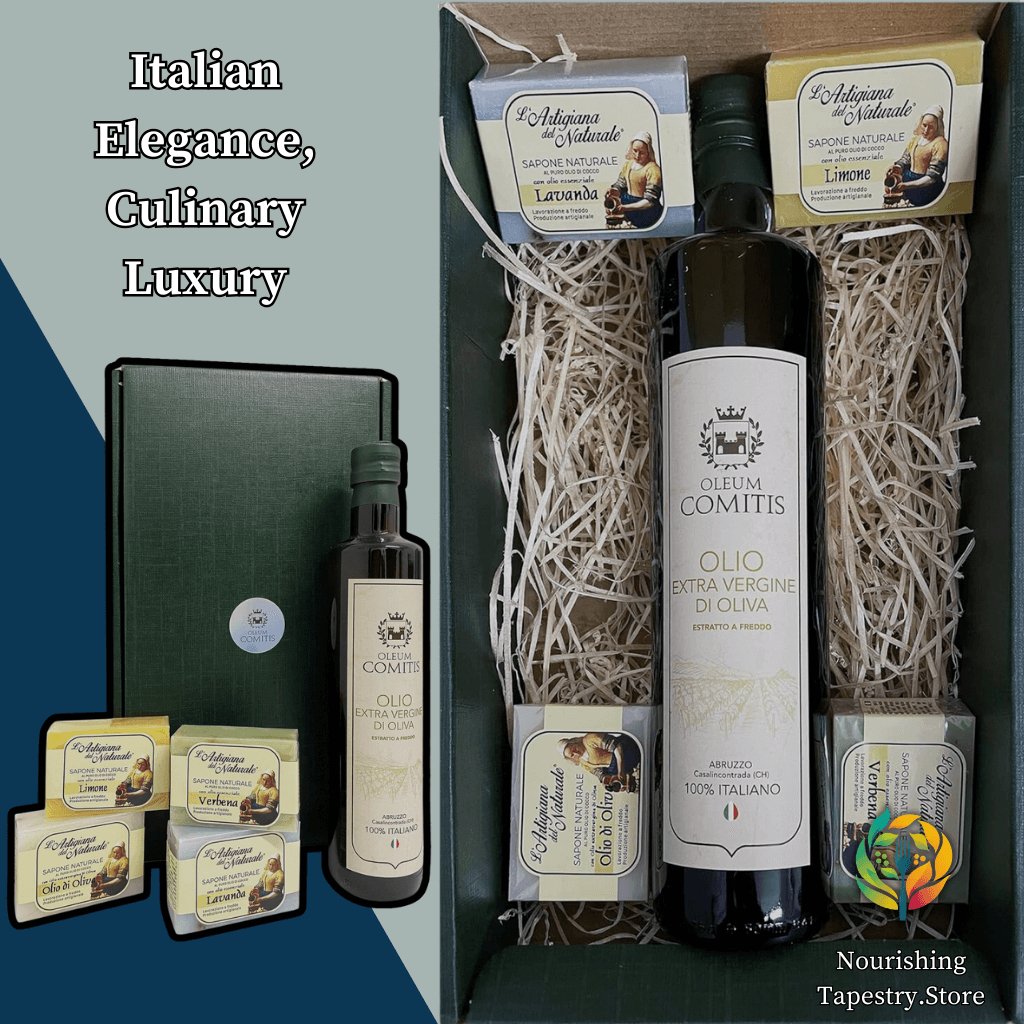
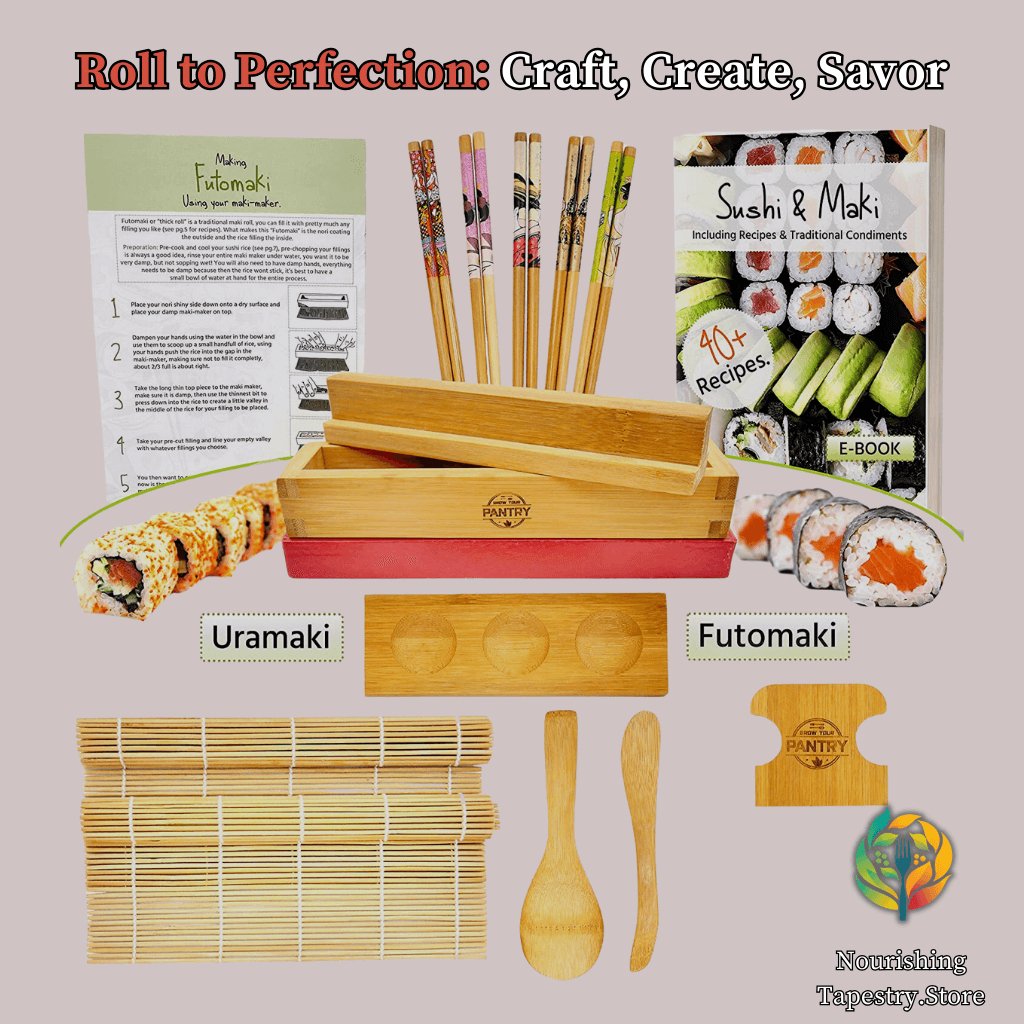
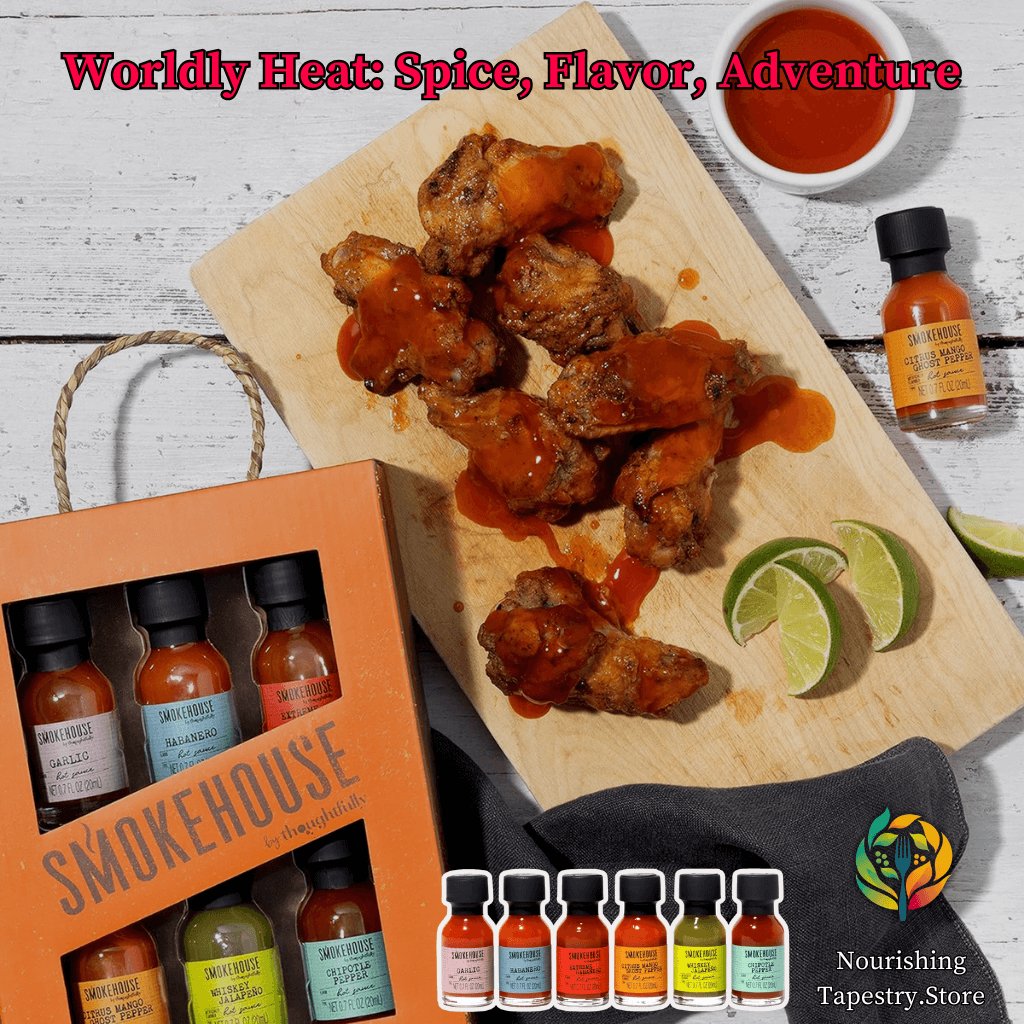
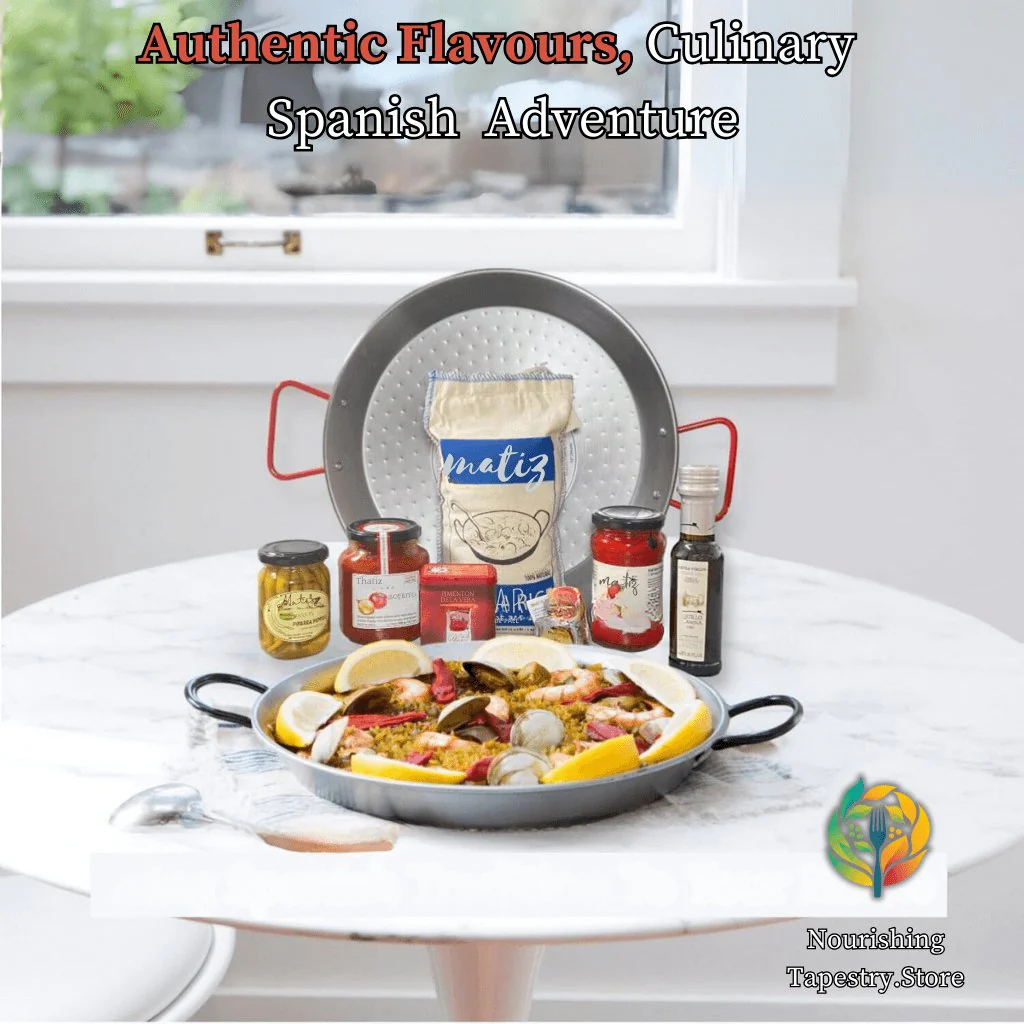
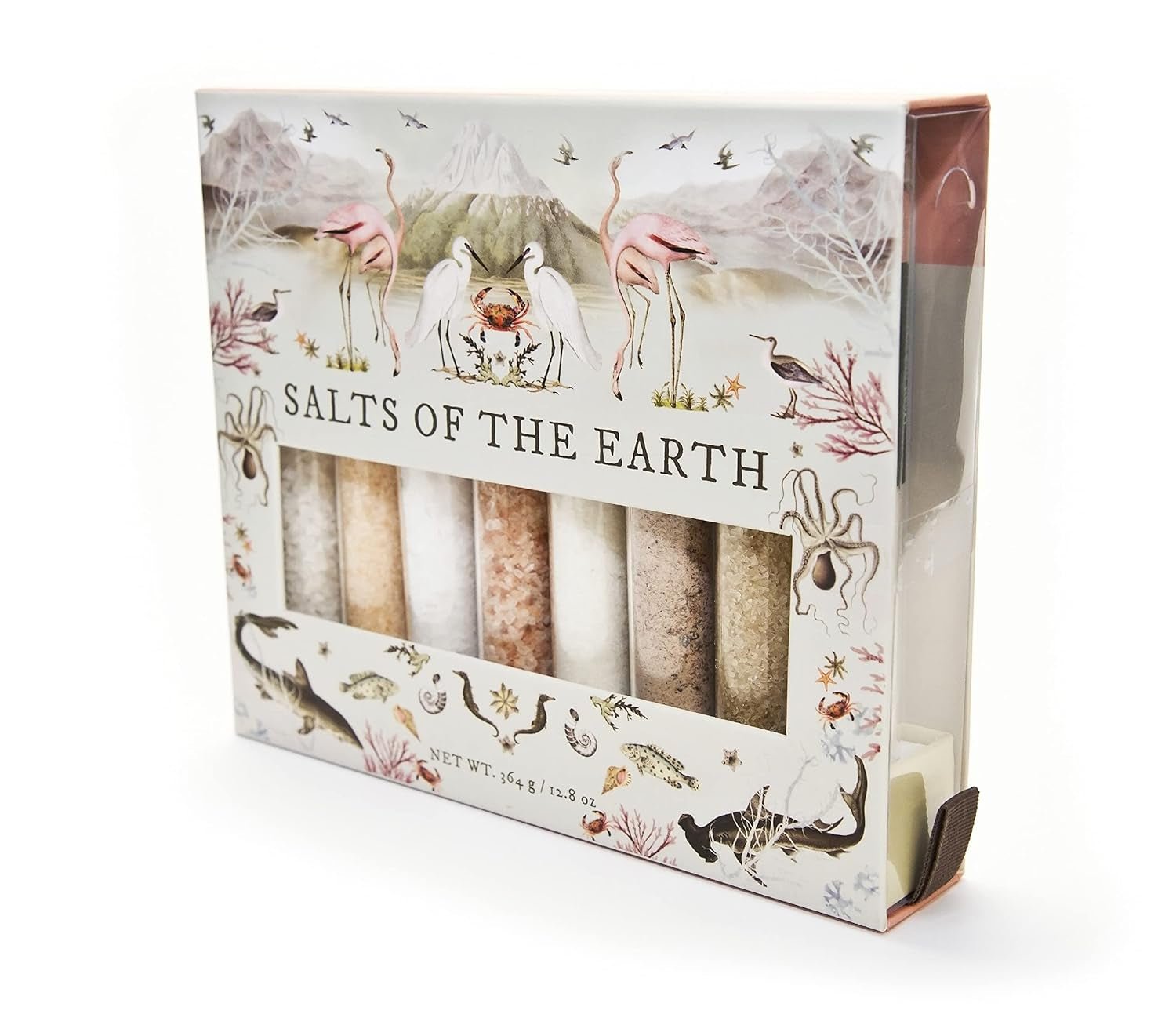
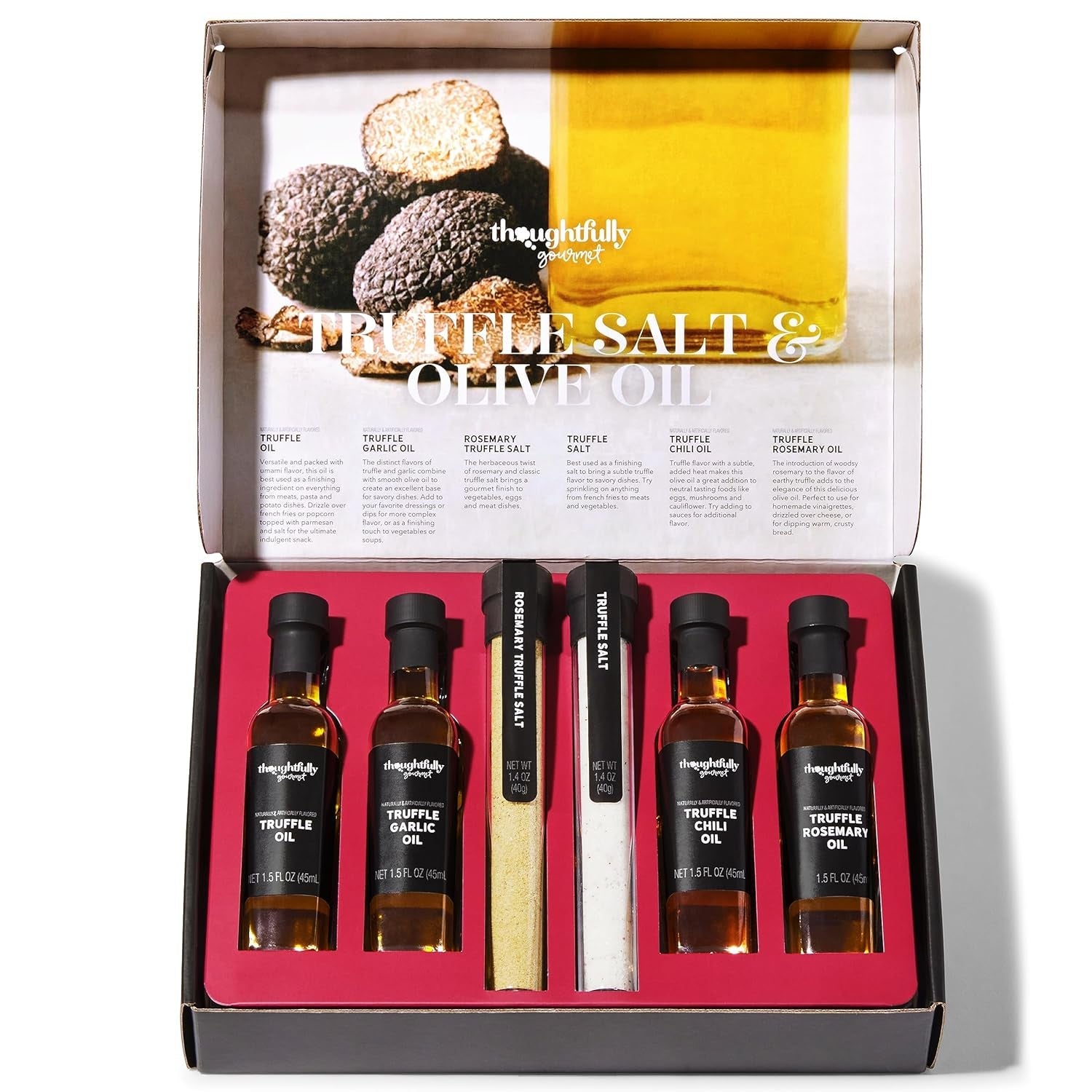
Cinnamon isn't just for desserts.
This versatile spice adds warmth to savory dishes too.
Opt for Ceylon cinnamon for a more complex flavor profile.
Freshly grated nutmeg is a game-changer.
It's perfect for béchamel sauce and holiday eggnog.
A little goes a long way, so use sparingly.
Bay leaves add depth to soups and stews.
Remove before serving – they're not meant to be eaten whole.
Dried bay leaves are more potent than fresh ones.
Paprika comes in sweet, hot, and smoked varieties.
It's essential for Hungarian goulash and Spanish paella.
Sprinkle on deviled eggs for a pop of color and flavor.
Garlic powder is great when you're short on time.
It's perfect for dry rubs and marinades.
Use it to make quick garlic bread in a pinch.
Onion powder adds depth without the tears.
It's a key ingredient in many spice blends.
Sprinkle on roasted vegetables for extra oomph.
Oregano is crucial for Italian and Greek cuisines.
It pairs well with tomato-based dishes.
Use it fresh or dried – both pack a flavor punch.
Chili powder is a blend, not just ground chilies.
It's the backbone of Tex-Mex cuisine.
Adjust the amount to control the heat level.
Curry powder is a spice blend, not a single spice.
It varies in heat and flavor depending on the brand.
Use it in soups, stews, and even as a popcorn topping.
Cayenne pepper adds heat without overpowering other flavors.
It's great for boosting metabolism.
Use it sparingly – a little goes a long way.
Cumin is essential in Mexican and Indian cuisines.
Toast whole seeds for maximum flavor.
It pairs well with beans and lentils.
Saffron is the world's most expensive spice.
It adds a unique flavor and golden color to dishes.
A little goes a long way – use sparingly.
Turmeric is known for its anti-inflammatory properties.
It adds a vibrant yellow color to dishes.
Pair with black pepper to enhance absorption.
Organic spices aren't just a trend.
They're free from pesticides and chemicals.
They often have a more intense flavor profile.
Supporting organic farming practices helps the environment.
Keep spices in airtight containers.
Store them away from heat and light.
Whole spices last longer than ground ones.
Replace ground spices every 6-12 months for best flavor.
Creating your own spice blends is fun and cost-effective.
Start with classic combinations like Herbs de Provence or Garam Masala.
Don't be afraid to invent your own signature blend.
Q: How long do spices last?
A: Whole spices can last up to 4 years, while ground spices are best used within 2-3 years.
Q: Can I substitute dried herbs for fresh ones?
A: Yes, but use 1/3 of the amount called for fresh herbs when using dried.
Q: Are spices healthy?
A: Many spices have health benefits, including anti-inflammatory and antioxidant properties.
Q: How should I store spices?
A: Store spices in airtight containers away from heat, light, and moisture.
Q: Can I use spices after their expiration date?
A: Spices don't spoil, but they lose potency over time. Use your senses to determine if they're still flavorful.
Stocking your pantry with these 13 essential spices is the first step towards culinary mastery.
Remember, quality matters – opt for organic, pesticide-free spices when possible.
Experiment, have fun, and let your taste buds be your guide.
Your well-stocked spice rack is waiting to inspire your next culinary adventure.
Explore our collection of bamboo cutting boards to complement your spice journey